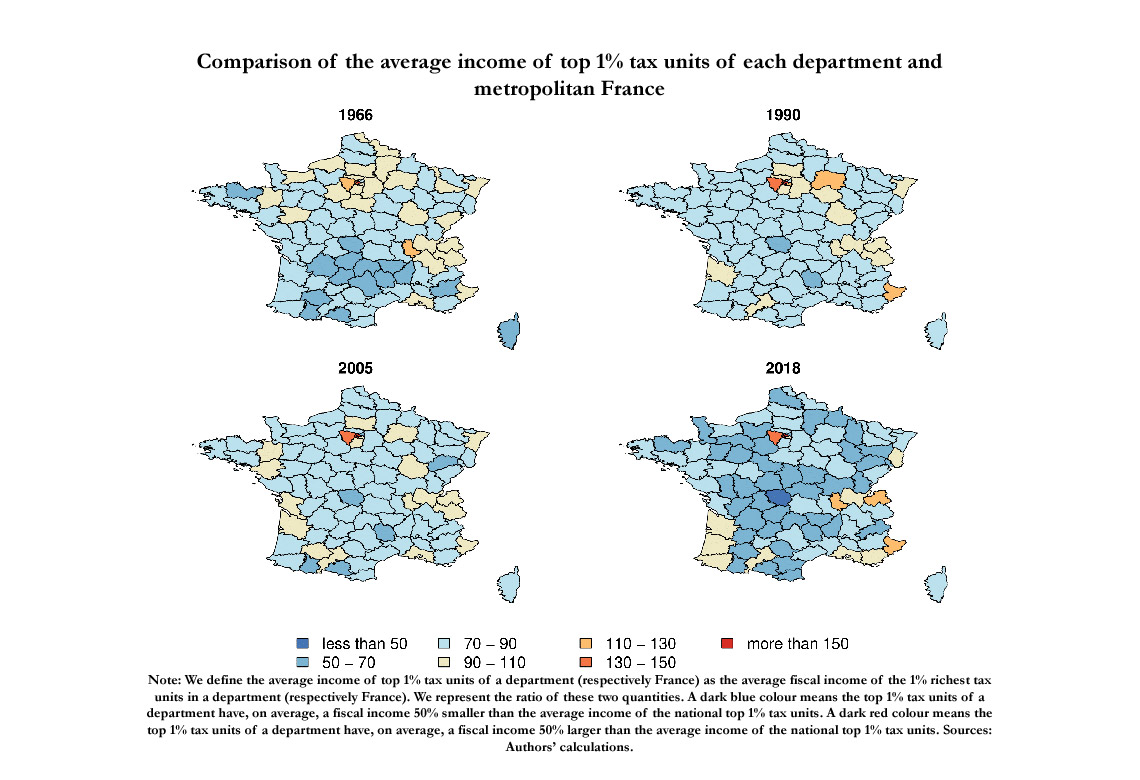
Working Paper Series no. 832: Regional Income Distributions in France,1960–2018
This paper proposes homogeneous annual series on the income distribution of French metropolitan départements for the period 1960-69 and 1986-2018. We rely on unpublished and newly digitised archives of the French Ministry of Finance. They consist of fiscal tabulations that are a summary of households’ income tax declarations. Based on these raw sources, we interpolate the whole income distribution of French metropolitan départements after 1986. Before 1986, we need more assumptions as only households liable to French income tax filed income tax declarations at that time. We propose a methodology to estimate the number and average income of non-taxable households before 1986 that also allows us to reconstruct the income distribution of French metropolitan départements for the period 1960-69.
The question of spatial inequalities has garnered increasing interest. However, in most countries, the extent of regional disparities remains unknown. For example, in France, there are numerous debates on the existence of a territorial divide between the Paris region and the rest of France.
In this paper, we uncover the magnitude of regional income disparities in France since 1960. More specifically, we construct homogeneous income distribution series for French metropolitan départements (hereafter referred to simply as departments) for the period 1960-69 and 1986 onwards. First, we have uncovered and digitised more than 4,500 unexplored fiscal archives from the French Ministry of Finance. Then, we have developped a methodology to reconstruct the income distribution of each French department.
Our work contributes to the literature on spatial inequality. Up until recently, the literature on economic history and spatial inequality has used indirect and scarce measures of long term local standards of living. Many articles have relied on regional value added data, which are easier to reconstruct on the long run. However, Bonnet et al (2021) have reconstructed average income of French departments since 1922 and shown that income spatial inequality may strongly differ from value added spatial inequality because of the monetary transfers (such as transfers due to the retirement or the unemployment system) that take place between regions.
Furthermore, until recently, most of the literature on spatial inequality has used data on average income per geographical unit. Few recent works on US data provide a deeper understanding of spatial inequality by using local income distribution series. Similarly, we find mixed results in France: the average income of the poorest tax units of each department have converged, it lead to a very significant reduction in interdepartmental average income inequality in the last fifty years, and concealed the divergence of the average income of the richest tax units of some departments.
Download the PDF version of this document

- Published on 09/24/2021
- 32 pages
- EN
- PDF (3.22 MB)
Updated on: 09/24/2021 11:29
